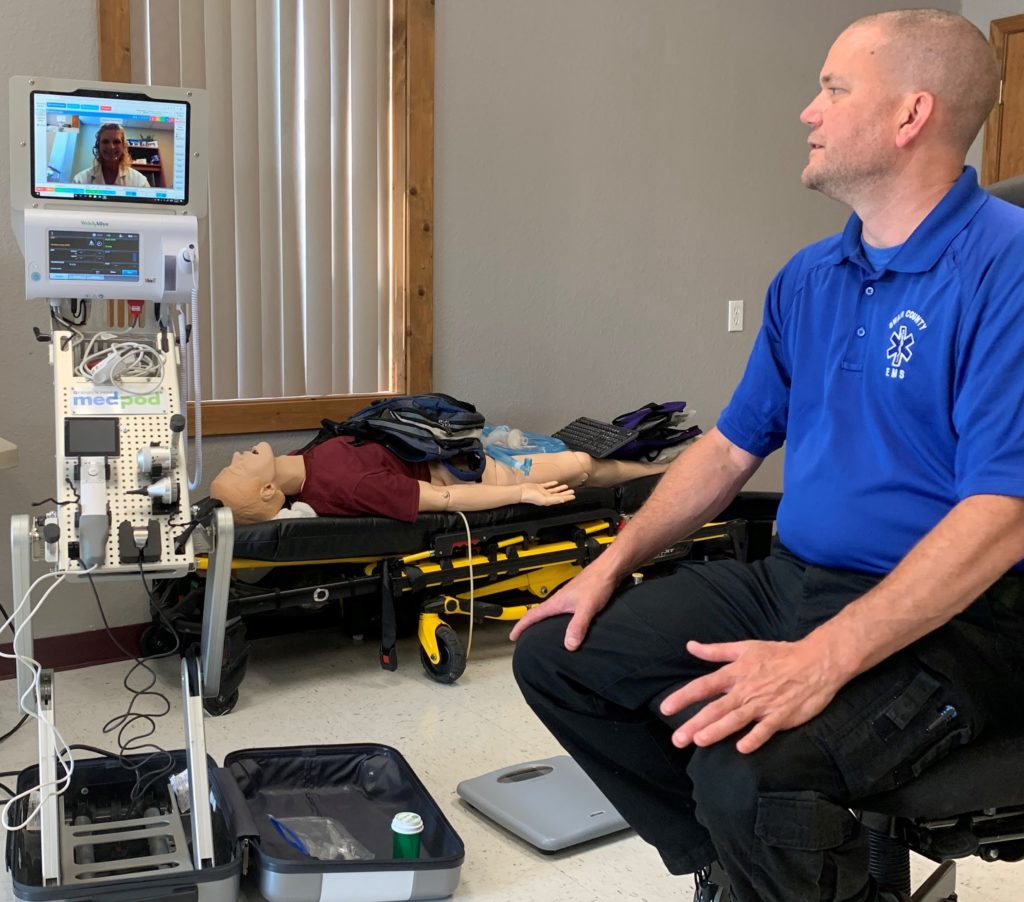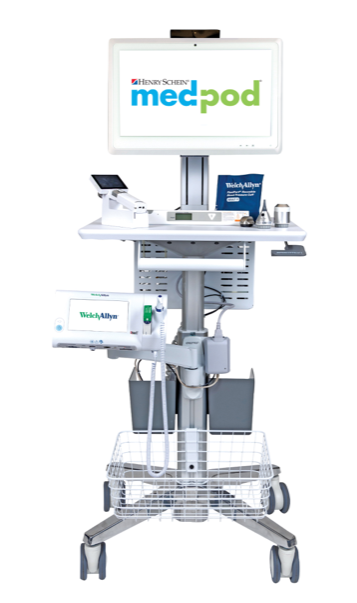Swain EMS’s COVID-19 Response Includes Facilitating Physician House Calls

When Swain County Emergency Medical Services Director David Breedlove was awarded a Nantahala Health Foundation grant in late 2019, he planned to use the funds to enhance the existing community paramedic program. By training and properly equipping EMTs to respond to non-emergency situations, he sought to reduce the need for expensive, invasive emergency room transports for chronically ill and under-served patients.
However, like nearly everyone looking forward to their spring and summer plans, Breedlove was forced to pump the breaks on his plan as coronavirus crept into our mountain communities. Instead of building upon the community paramedic program as originally intended, the health and safety of at-risk community members, as well as his team of front-line medical professionals, forced him to quickly shift gears.
Thankfully, with NHF funding available, Breedlove’s creative, affordable solution has supported the department’s need to rapidly address changing service requirements associated with COVID-19. Even better, the same solution will assist him achieve long-term goals for a healthier community.

The MedPod Cart fits into a case the size of carry-on luggage, yet it includes the latest in clinical diagnostic devices paired with a two-way video screen. Now, when EMS is called upon to assist someone in need, local physician’s assistant Angela Struma is able to ‘ride along’ via an Internet connection. As paramedic Brandon Wiggins collects a patient’s vital signs in their Almond living room, the information is instantly relayed to Struma’s office computer in Bryson City.
According to Struma, this single piece of equipment has already benefitted several home-bound and at-risk patients by eliminating their need to travel to and be cared for in a clinical or hospital setting, where their chances for exposure to COVID-19 and other communicable diseases are elevated. MedPod has benefitted Breedlove’s staff, who also put themselves at risk with each call out and trip to the ER. The third ‘win’ in this win-win-win scenario is the reduction of fees incurred by patients, most of whom can least afford the costs associated with emergency care.
MedPod elevates a traditional telehealth visit by introducing the trained paramedic into the equation. Working through Wiggins, Struma can peer into an ear channel, see the back of a throat, and visually examine magnified, real-time images of the body. When a diagnosis is determined, she can prescribe medications and offer additional treatment recommendations.
As social determinants of health, including the conditions in which individuals live, continued to be linked in ever-growing ways to individual health outcomes, the MedPod unit in the hands of a trained professional is providing Struma a vital inspection of a patient’s living conditions. As Wiggins directs MedPod’s camera toward various areas of a the patient’s home environment, the PA gathers additional evidence toward her diagnosis. Without leaving her office, Struma is making old-fashioned house calls, thanks to Swain County EMS, MedPod, and grant funding provided by Nantahala Health Foundation.
Nantahala Health Foundation is proud to be a partner in this and nearly 30 similar projects throughout Western North Carolina. As a catalysis for innovation and collaboration, NHF seeks to break down barriers to health by working with nonprofit service providers and governmental agencies in Cherokee, Clay, Graham, Swain, Macon, Jackson counties and the Qualla Boundary
